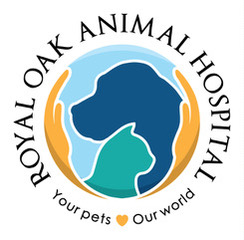Library
-
Dogs are highly social animals that make wonderful pets. They can be effective as watchdogs, are excellent companions for play and exercise, and are sources of affection and comfort. With the lifestyle and schedule of the majority of families, dogs must learn to spend a portion of the day at home, while their human family is away. Teaching your dog to relax and sleep in its crate or bed would be similar to putting your baby in its crib when its time for bedtime or a nap.
-
Cats have evolved to hide signs of illness and pain. This means that in the early stages of illness, often the only thing that a cat owner may notice is that the cat has become quiet and withdrawn. This article outlines some signs of illness you can look for. In general, any sudden change should alert you that your cat needs veterinary attention. If your cat does not seem right, make an appointment see your veterinarian for an examination as soon as possible.
-
In the wild, a bird will try to uphold a strong appearance when sick. By the time a pet bird begins to display symptoms of illness, it has likely been sick for several days to weeks. Many things contribute to ill health. This handout provides bird owners with a list of signs that will alert them that their bird is sick.
-
Adding a new kitten to your family is a lot of fun, but it is also a big responsibility. Your kitten will need to see your veterinarian for vaccinations, deworming, and flea control. Proper nutrition is essential for growth, so choosing the right food is important. Spaying or neutering offers health advantages. All kittens should be microchipped to provide identification in case she escapes.
-
Owning a puppy can be an extremely rewarding experience but it is also a large responsibility that lasts the entire lifetime of the dog. Working with your veterinarian, there are several preventive measures to help keep your puppy safe and healthy as he grows up, including vaccination, parasite treatment and prevention, identification, and spaying or neutering your dog.
-
While hunting is still his first love, the Redbone Coonhound is a laid back hound generally content to lounge around the house and yard.
-
For many cats, a visit to the veterinarian can be stressful. Familiarize your cat with being inside a carrier: make the carrier a cozy and pleasant place to be – it is essential for your cat’s safety. Upon arrival at the veterinary office, try to relax and talk calmly to your cat. Bring delicious, favorite treats and a familiar towel that your cat can snuggle in during her examination.
-
Despite the fact that early breeders developed the dog as a formidable hunter and defender of property, Rhodesian lovers stay with the breed because he is also a fine companion animal, intelligent, playful and affectionate.
-
A successful road trip with a cat begins long before the day of travel. Teach your cat that the carrier is a great, everyday place to hang out. Take your cat's medical documents with you and be sure your cat wears identification during travel. Take a small supply of the litter your cat's used to and bring along water from home. Consult your veterinarian to create the best travel plan for your cat if she does not travel well.
-
A successful road trip with a dog begins long before the day of travel. If you have a small dog, teach him that his carrier is a great, everyday place to hang out. For larger dogs, there are several well-designed doggy seat belts for restraint in the back seat. Take your dog's medical documents with you and be sure your dog wears identification during travel. Consult your veterinarian to create the best travel plan for your dog if he does not travel well.


